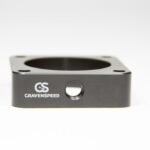The enigmatic term “Selah” punctuates the texts of the Psalms and Habakkuk, a word that has spurred centuries of scholastic exegesis and devotional contemplation. It’s a tantalizing cipher, appearing 71 times in the Psalms and thrice in Habakkuk, yet lacking definitive etymological certainty. Its presence is undeniable; its meaning, however, remains shrouded in a veil of linguistic conjecture. Let’s embark on a journey through the myriad interpretations and the enduring mystique of “Selah.”
Theories Surrounding Selah’s Meaning: A Lexicographical Labyrinth
The absence of a clear, unambiguous definition of “Selah” has engendered a plethora of interpretations, each attempting to unlock its semantic core. We’ll explore some of the most prominent hypotheses:
1. Musical Notation: A Ceasura or Interlude?
One prevailing theory posits that “Selah” functions as a musical directive. Imagine a conductor’s baton, signaling a specific action within the musical performance. Perhaps it indicates a caesura, a momentary pause or break in the music, allowing for reflection and absorption of the preceding verses. Think of it as a breath taken in the midst of song. Alternatively, it may denote an interlude, a brief instrumental passage designed to embellish the melodic landscape and provide a textural contrast. This theory aligns with the understanding of the Psalms as liturgical texts, intended for communal worship and accompanied by instrumental music.
2. Elevation of Voice or Volume: A Crescendo of Emotion?
Another interpretation suggests that “Selah” signifies an increase in volume or pitch. Picture a crescendo building, intensifying the emotional resonance of the words. “Selah” in this context acts as an instruction to elevate the vocal delivery, imbuing the recitation with greater fervor and passion. It’s an auditory amplification, a sonic enhancement intended to amplify the spiritual import of the preceding message.
3. Affirmation or Emphasis: An Amen or Verily?
Yet another perspective proposes that “Selah” serves as an affirmation or emphatic marker, akin to “Amen” or “Verily.” Consider it a verbal punctuation mark, underscoring the truth and significance of the preceding statement. It’s a declaration of assent, a resounding “yes” to the pronouncements of faith and devotion. It functions as a textual reverberation, reinforcing the message and prompting listeners to internalize its essence.
4. Bowing or Prostration: A Gesture of Reverence?
Some scholars theorize that “Selah” indicates a physical action, such as bowing or prostration. Imagine the congregation, collectively lowering themselves in a gesture of humility and reverence. “Selah” in this scenario serves as a cue for this physical manifestation of devotion, transforming the liturgical experience into a holistic act of worship, engaging both the mind and the body. It’s an embodied response to the divine presence, a physical expression of spiritual submission.
5. Upward or Lifting Up: A Heightening of Attention?
The Hebrew root of “Selah” (סלה) has also been linked to the concept of “lifting up” or “exalting.” This interpretation suggests that “Selah” prompts the listener to elevate their thoughts and emotions, to ascend to a higher plane of spiritual contemplation. It’s a mental ascension, a call to transcend the mundane and embrace the divine. It might encourage the audience to fix their gaze upward, both literally and figuratively, focusing on the celestial realm.
Selah: A Multifaceted Jewel
The enduring mystery of “Selah” lies, perhaps, not in a single, definitive answer, but in its multifaceted nature. It’s plausible that “Selah” encompassed multiple functions, depending on the specific context and the nuances of the liturgical performance. Perhaps it served simultaneously as a musical cue, an affirmation, and an invitation to deeper reflection.
Think of “Selah” as a linguistic prism, refracting a spectrum of meanings. Each facet offers a glimpse into the rich tapestry of ancient Hebrew worship, revealing the intricate interplay of music, poetry, and devotion. It is a testament to the sophistication of the liturgical practices, where words, music, and gestures coalesced to create a profoundly moving spiritual experience.
The Enduring Appeal of Selah
Regardless of its precise etymological origins, “Selah” continues to resonate with readers and worshippers centuries later. Its ambiguity, paradoxically, enhances its power. It invites us to pause, to reflect, to engage with the text on a deeper level. It allows for personal interpretation and subjective experience, transforming the reading of the Psalms into a dynamic and interactive dialogue with the divine.
The word becomes a blank canvas onto which we project our own hopes, fears, and aspirations. It encourages contemplation and allows us to internalize the message of the psalm in a profoundly personal way. In the silence following “Selah,” we find space to breathe, to listen, and to connect with the eternal truths expressed within the sacred texts.
Ultimately, the beauty of “Selah” resides in its elusiveness. It remains a tantalizing enigma, a linguistic vestige of a bygone era, inviting us to ponder the mysteries of faith and the power of sacred expression. It’s a reminder that some truths are best understood not through rigid definition, but through intuitive apprehension and contemplative immersion.









Leave a Comment